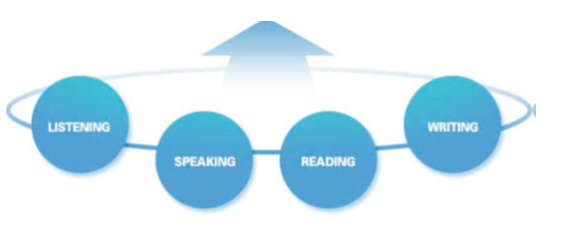English language teaching could be viewed as a tapestry. The tapestry is woven from many strands. To produce a large, strong, beautiful, colourful tapestry, all strands must be interwoven in a skilful way. The opposite is likely to produce something small, weak, ragged, and pale -not recognizable as a tapestry at all. The same applies to teaching; in a teaching situation the strands are: the characteristics of the teacher, the learner, the setting, and the target language.
In teaching the instructor’s teaching must address the learning style of the learner, the learner must be motivated, and the setting must provide resources and values that strongly support the language teacher.
In addition to the four strands mentioned above -teacher, learner, setting, and the target language -other important strands exist -the four primary skills of listening, reading, speaking, and writing which are also associated with knowledge of vocabulary, spelling, pronunciation, syntax, meaning, and usage.
If this weaving together does not occur, the strand consists merely of discrete, segregated skills -parallel threads that do not touch, support, or interact with each other. This is known as the segregated-skill approach which sees language learning separate from content learning. Such an approach would not ensure adequate preparation for later success in academic communication, career-related language use, or everyday interaction in the language.
The integrated-skill approach, as contrasted with the segregated one, exposes English language learners to authentic language and challenges them to interact naturally. Learners rapidly gain a true picture of the richness and complexity of the English language as employed for communication. Moreover, this approach stresses that English is neither an object of academic interest nor merely a key to passing an examination; instead, English becomes a real means of interaction and sharing among people. This approach allows teachers to track students’ progress in multiple skills at the same time. Integrating the language skills also promotes the learning of real content. Finally, the integrated-skill approach, whether found in content-based or task-based language instruction or some hybrid form, can be highly motivating to students of all ages and backgrounds.
In order to integrate the language skills in EFL instruction, teachers should consider taking these steps:
* Learn more about the various ways to integrate language skills in the classroom (e.g., content-based, task-based, or a combination).
* Reflect on their current approach and evaluate the extent to which the skills are integrated.
* Choose instructional materials, textbooks, and technologies that promote the integration of listening, reading, speaking, and writing, as well as the associated skills of syntax, vocabulary, and syntax.
* Even if a given course is labelled according to just one skill, remember that it is possible to integrate the other language skills through appropriate tasks.
* Teach language learning strategies and emphasize that a given strategy can often enhance performance in multiple skills.
With careful reflection and planning, any teacher can integrate the language skills and strengthen the tapestry of language teaching and learning. When the tapestry is woven well, learners can use English effectively for communication.
